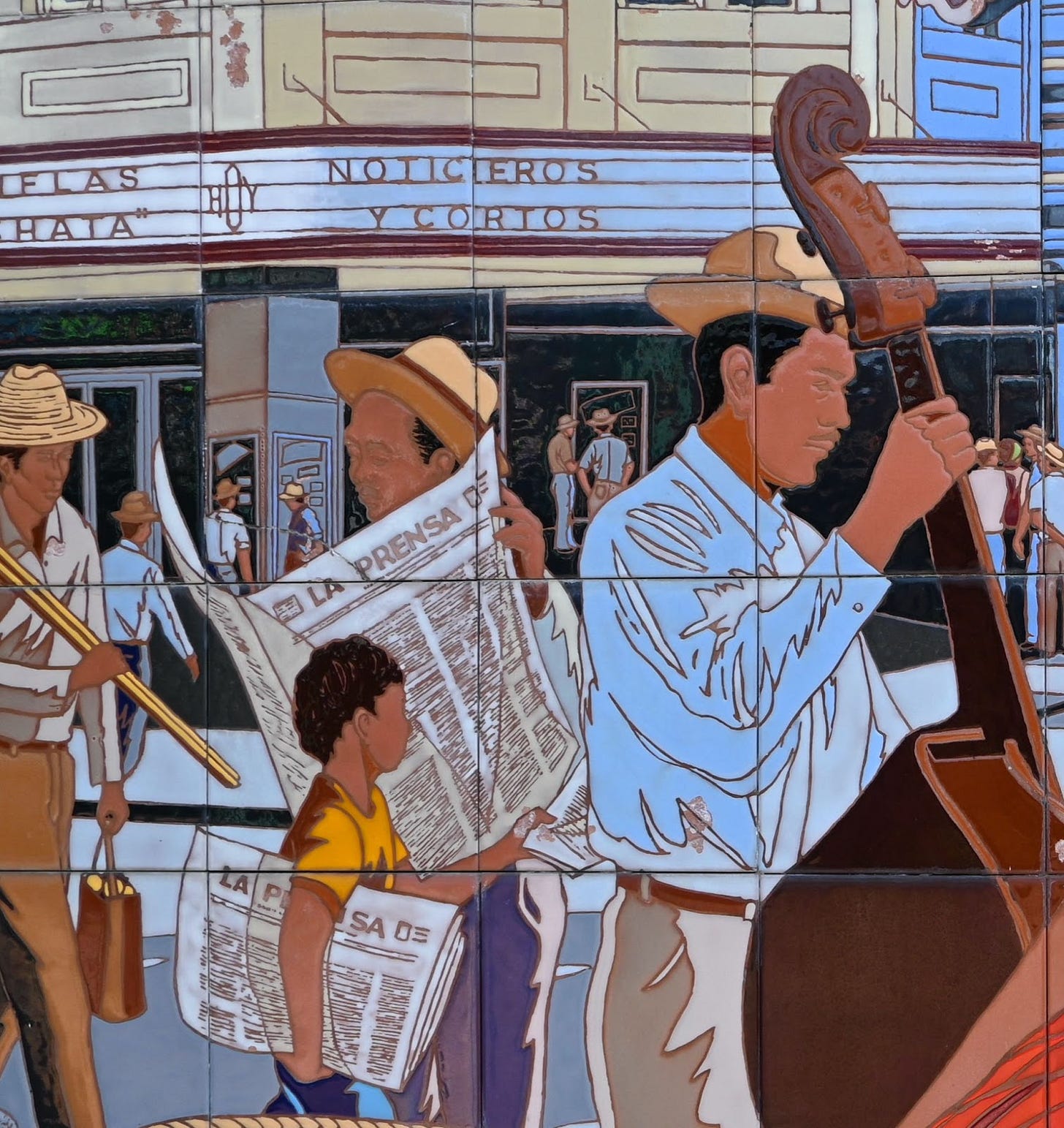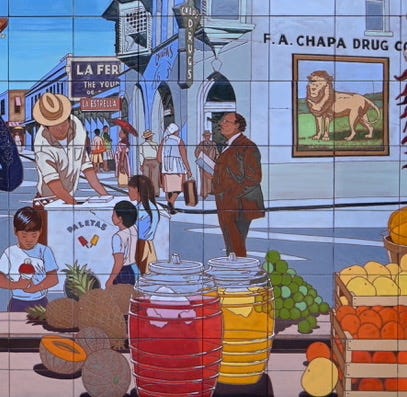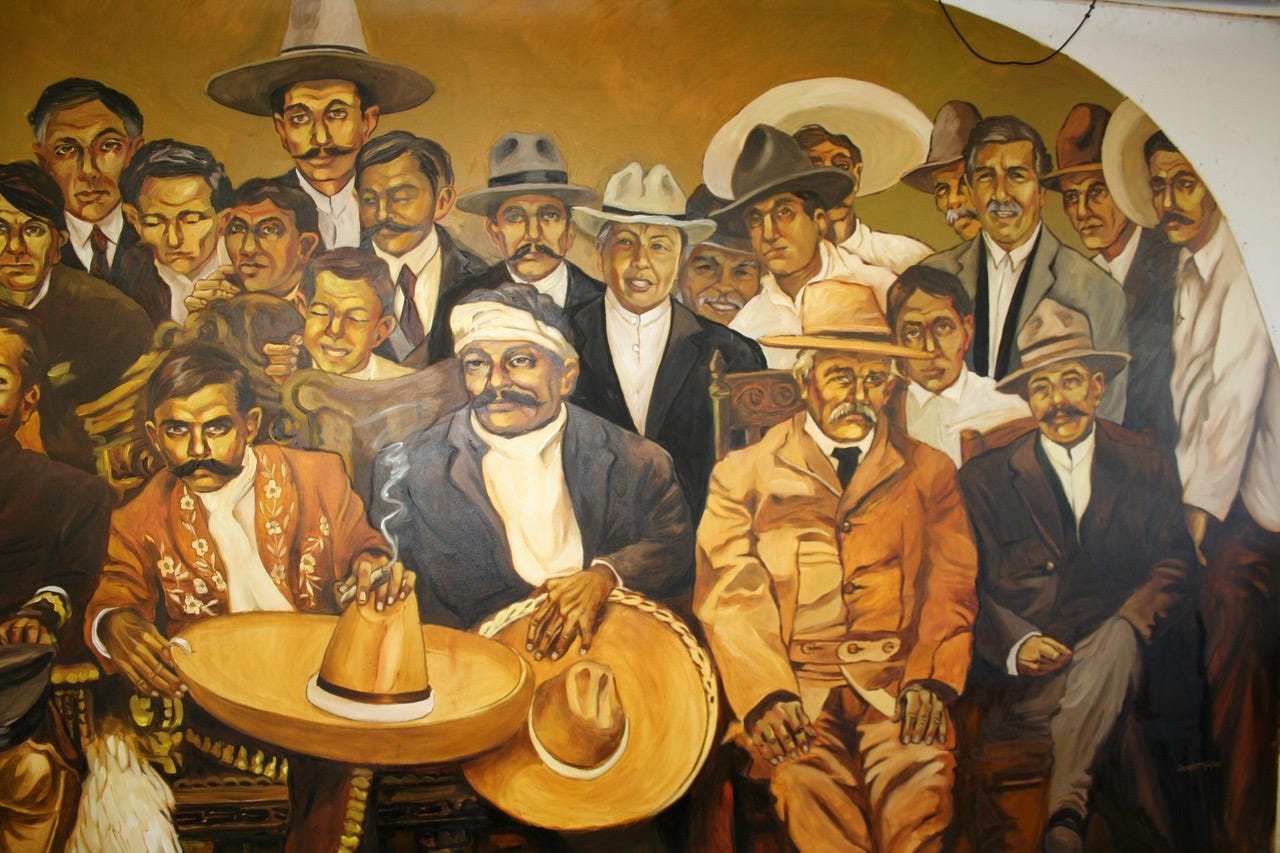The Early History of a Major Spanish-Speaking Newspaper in the United States: La Prensa of San Antonio, Texas
Spanish-language newspapers were important to the Mexican American community before television and radio became common gadgetry in the majority of households. The San Antonio Mexican-origin community, which was largely comprised of residents of immigrant status before the 1940s, received much of their news from the printed pages of newspapers like La Prensa.
Jesse Trevino Market Square Tile Mural showing San Antonians reading La Prensa. Photo by Ricardo Romo.
La Prensa first appeared in San Antonio when Ignacio E. Lozano, a Mexican immigrant with journalism experience, began publishing the newspaper in 1913. La Prensa rapidly emerged as one of the first Spanish-language newspapers distributed nationally. Over the next 50 years, La Prensa served as an important voice of the Mexican American people of the United States. The Lozano family sold La Prensa in 1957, and it ceased publication in 1963. Over its life of more than five decades, La Prensa published thousands of stories and an equal number of editorials about Mexican and Mexican American social life, politics, and culture. This essay is an account of Ignacio E. Lozano’s early years of establishing La Prensa.
Lozano was a well-known Mexican journalist from Mapimi, Durango, when he left Mexico in 1908, two years before the outbreak of the Mexican Revolution. A story in the journal American Journalism noted that Lozano “arrived virtually penniless in San Antonio.”
When Lozano arrived in San Antonio in 1908, the city had the largest Mexican population in the United States. [The 1910 U.S. Census reported 29,480 residents of Mexican origin]. Lozano’s journalism experience proved helpful when he met with Francisco Chapa, the publisher of the Spanish-language newspaper, El Imparcial, about a job.
Francisco Chapa, San Antonio’s best-known Spanish-speaking pharmacist, needed someone like Lozano to manage his newspaper while he devoted his time to his popular drugstore, Chapa Drugs, on the corner of Santa Rosa and Commerce Street. Chapa, who founded his drugstore in 1895, also served as the Mexican community’s highest elected official, as an Assemblyman for Ward Three, the Mexican district of the city.
Jesse Trevino Market Square Tile Mural showing Francisco Chapa’s Drug Store. Photo by Ricardo Romo.
Seeds of the Mexican Revolution were being planted the year Lozano began working for El Imparcial in 1908. When Mexican President Porfirio Diaz expressed doubts about running for re-election in 1910, Francisco Madero, the son of a wealthy ranching family from Coahuila, entered the presidential race. Within a year, Diaz changed his mind and decided to campaign for another term. By the time of the election in 1910, Diaz had ordered Madero arrested. Helped by his wealthy northern Mexican family, Madero jumped bail and fled to San Antonio, Texas.
Madero found the Mexican community in San Antonio receptive to his progressive ideas of bringing about political change in Mexico. The large Mexican community in the city followed the international news about the political drama unfolding in Mexico. While in San Antonio, Madero met with exiled Mexicans who believed in his campaign to up-end the Diaz dictatorship.
Historians note that the Mexican Revolution was initially planned in San Antonio. While in San Antonio, Madero penned his famous Plan de San Luis Potosi which declared the 1910 Mexican elections null and void. Madero proclaimed himself the real president of Mexico.
Madero also called for armed revolution to begin on November 20, 1910. Actual fighting began in Cuidad Juarez that year across the border from El Paso when the forces of Francisco Villa and Pasqual Ororzo defeated Diaz’s Federal forces. The rebels' victory is credited with forcing Diaz to resign and bolt to Paris, France. The battle in Juarez also triggered a series of rebellious movements throughout the Mexican nation that fueled the Mexican Revolution.
Armando Sanchez mural depicting the Mexican Revolution leaders with San Antonio leaders at Pico de Gallo Restaurant. Photo by Ricardo Romo.
With the advent of the Revolution, a swift exodus of Mexican refugees began. The fighting disrupted the lives of millions of workers, teachers, doctors, and students. Nearly all of Mexico welcomed the election of Francisco Madero and Jose Pino Suarez in 1911 to head the troubled nation. However, many Mexican elites stood apart from those cheering the rise of a new regime. Notably, San Antonio’s El Imparcial lamented the political exile of Diaz.
The political turmoil and incessant military campaigns throughout Mexico over the decade 1910-1920 had ramifications in all the U.S. borderland towns and urban centers. San Antonio experienced rapid demographic changes from the Mexican Revolution with the influx of thousands of newcomers from our southern neighbor. Indeed, according to the U.S. Census, San Antonio’s Mexican population doubled from 29,000 to 59,000 over the period 1910-1920.
Emiliano Zapata, leader of the Southern Army of the Mexican Revolution. Cassiano Homes mural, Juan Hernandez lead artist. Photo by Ricardo Romo.
As the Mexican Revolution raged, the Mexicans who had fled the violent turmoil grew worried about their country and the families they had left behind. Newspapers became ever more important as news reports became the major source of information para los de afuera [“for those living outside of Mexico”]. Ignacio E. Lozano’s work with San Antonio’s El Imparcial, the conservative newspaper of Francisco Chapa, may have led him to think about the need for additional news sources. In 1913, Lozano left Chapa’s newspaper and started his own publication which he called La Prensa.
Many of the refugees of the Mexican Revolution arriving in San Antonio during the 1910s came with the expectation that one day they would return to Mexico. The refugees included the poor and the rich, as well as the educated and uneducated. In starting La Prensa, Lozano looked for experienced printers and talented managers. By hiring Leonides Gonzalez, La Prensa’s first employee in 1913 and business manager for the next 44 years, Lozano found the perfect match.
Gonzalez came to San Antonio in 1911 shortly after Francisco Villa launched a military campaign against President Diaz in his home state of Durango. Gonzalez, the mayor of Mapimi, Durango, had served as a Diaz-appointed chairman of the region’s political party. When revolutionaries captured the city, Gonzalez went before a firing squad, but he was miraculously saved from gunfire by a neighbor whom he had earlier helped escape a similar fate. Soon after, Gonzalez fled to San Antonio. Gonzalez served as La Prensa’s business manager until his retirement in 1957 when Lozano sold the newspaper. Leonides Gonzalez passed away in 1966 five years after his son Henry B. Gonzalez was elected to the U.S. Congress.
During the decade of revolutionary conflict in Mexico, the San Antonio immigrant community hungered for news. Over this period, La Prensa covered all aspects of the Mexican Revolution for the exiled and immigrant community. And there was much to cover. La Prensa documented innumerable battles, shifting political positions, and the rise and fall of military leaders.
The Texas State Historical Association [TSHA] notes that on September 15, 1915, La Prensa printed its first annual special on Mexican patriotic themes. A thirteen-part series on the topic of Mexicans and education followed. It ran from November 26 to December 26, 1916, raising awareness of “the growing problem of segregation of children of Mexican descent.” La Prensa was among the first newspapers in Texas to challenge the segregation of Mexican children, and over the next 50 years, the newspaper and the Lozano family championed many civil rights issues impacting Mexican Americans.
The Mexican Revolution and the subsequent events of the 1920s represented important coverage opportunities for La Prensa. The newspaper included essays by the influential Mexican intellectual, Querido Moheno, a former Minister of Commerce and Industry in Mexican President Victoriano Huerta’s cabinet.
Francisco “Pancho” Villa with U.S. General Blackjack Pershing in the palm of his hand. Cassiano Homes mural, Juan Hernandez lead artist. Photo by Ricardo Romo.
During the revolution years, 1910-1920, Moheno accurately alerted readers of dangers associated with United States intervention in Mexico, especially after U.S. Naval forces seized the customs house in Veracruz, Mexico in 1914. The paper also reported General John J. “Blackjack” Pershing’s invasion of Mexico’s northern states in 1916 in search of the rebel leader Pancho Villa.
The 1910s-1920s were among the best years of La Prensa’s fifty-year publication history. A TSHA study by Nora E. Rios McMillan noted that in 1928 the Congress of the Latin Press, meeting in Havana, Cuba, gave special recognition to La Prensa and its sister paper La Opinion, an award for top coverage of Mexican presidential politics of the 1920s era.
The success of La Prensa’s early years is a tribute to Ignacio Lozano’s vision, business acumen, and work ethic. As a professional journalist, he also understood the Mexican community’s need for accurate accounts of newsworthy events. More importantly, he shared his Mexican compatriots’ appreciation and love for Mexican history, culture, and traditions.








Well researched local and important history that serves to remind today's Mexican Americans can unite as a people when confronted with adversity. History is a teacher that instructs leadership and action...great job Ricardo in presenting this information...Mario
So important to know this history.